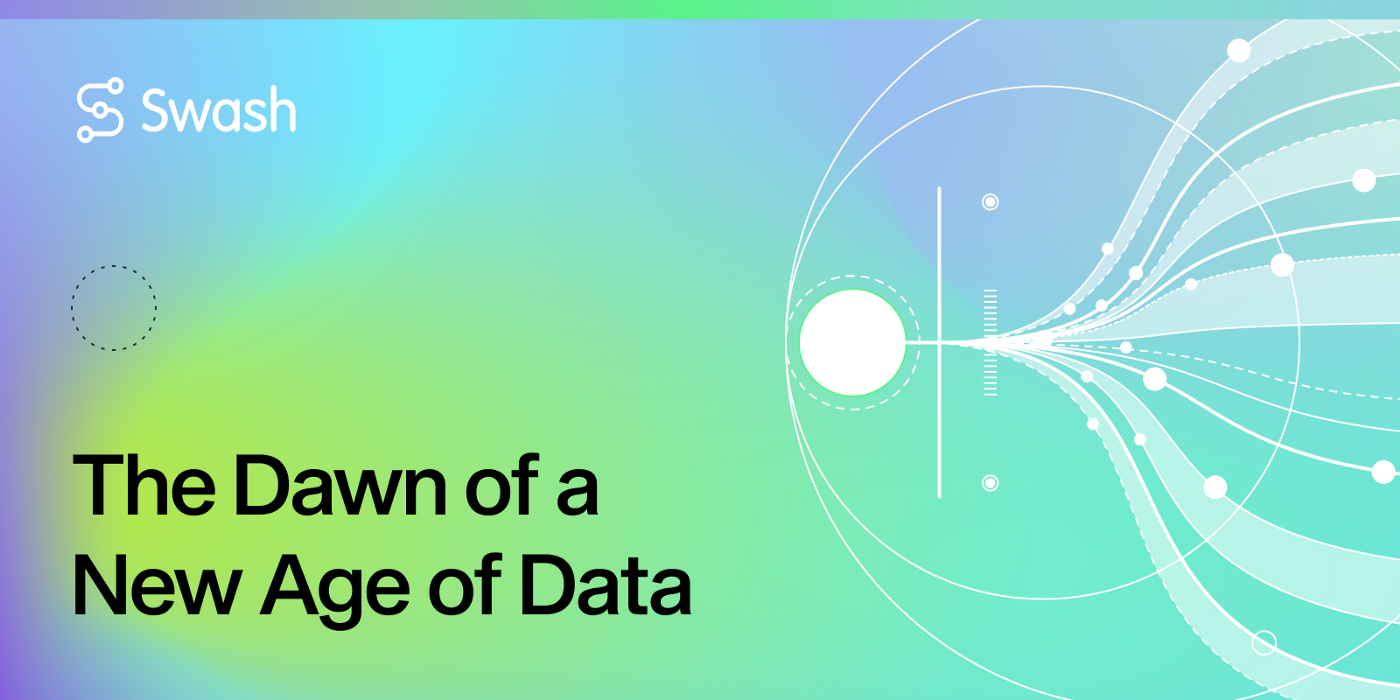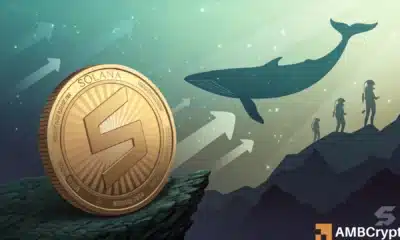Rebalancing the data economy with Swash

Data ownership and privacy concerns are issues that are gaining increasing attention in recent years. According to research, every user creates an estimated 1.7 MB of data every second, and the data industry itself is pegged at a whopping $3 trillion dollars. Data is here to stay.
Data analytics has immense power to influence societal trends and behaviors, an urgent issue now as the world shifted online as a result of the pandemic. While data regulations have their limitations, users controlling their own data looks to be not only the only viable solution but also a win-win situation for both the user and businesses.
Swash’s mission is to rebalance the data economy. Its live data monetization app – a browser plugin with over 60,000 users at the time of writing – is getting us all closer to a new internet with people at the center.
Swash is now expanding into a full data ecosystem built with the premise of recognizing and incentivizing people, businesses, and developers to work in collaboration and build a better internet together.
What is Swash?
Swash is creating a Web 3 data solutions environment to enable users to take ownership of their data and receive their share of its value. Swash welcomes anyone who uses the internet from individuals to start earning, businesses to start buying high-quality, zero-party data, and developers to be part of the next generation of data solutions.
Swash’s browser extension launched in 2019 as the world’s first Data Union. Its popularity and user base have grown rapidly since then and, as a result, it has been featured in prominent research on data futures by the likes of Mozilla Foundation, the Aapti Institute, and the Open Data Institute (ODI).
Key Elements
Some of the major elements of Swash include:
- sCollector: These are applications installed by Swash users that help them capture, pool, and sell data on their behalf.
- sMember: Swash users who have installed one of the Swash sCollectors to control their data and gain benefits from it are called sMembers.
- sCustomer: People who buy data from Swash through their marketplaces and/or subscribe to their business intelligence platform are called sCustomers.
- sUser: sUsers are the people who authorize the use of sApps and can provide an added revenue stream for their interaction through polls and questionnaires.
- sCore: The 3 main elements of Swap architecture namely data fabric, analytics, and marketplace, and; applications and services environment combine to form sCore.
- sPortal: It is a web-based application that would help clients to communicate with sCore.
- sVault: The sVault receives income from the entire Swash ecosystem and with the help of Swash smart contracts redistribution.
Swash’s Solutions
Swash works as an ecosystem facilitator and intends to continue building its use cases for its community of developers, businesses and people. Some of the major use cases are:
- sApps: The Swash ecosystem offers developers a chance to build Swash applications or sApps. They come in a variety of forms but have the underlying ability to redistribute profits and compensations to the people that fuel them.
- sCompute: sCompute provides data scientists and sClients a chance to perform computations on data without a need to move it. While the data itself remains private and is not sold or moved, users get a chance to deploy their algorithms on Swash data and pay only for the computation and get the results.
- Data Unions: Data Unions are structures that work to manage and protect the interests of those within the union. Users who are a part of the Data Union get a chance to leverage collective action and power in a way where their autonomy is recognised and they receive their share of the value of their data back.
- sIntelligence: In order to help businesses get a better understanding of their industry, the market, and their competitors. sIntelligence provides businesses with unique insights via a customisable web-based dashboard, fuelled by Swash data.
Swash Token and its Use Cases
Swash tokens (SWASH) are the utility and governance tokens of the Swash ecosystem with a total supply of 1,000,000,000. It is a cross-chain ERC677 and BEP20 token with an initial circulation of 5.4% of the total supply.
Out of the total supply, a 10% share is for the team and advisors while a 5% share is for the strategic round, pre-sale round, liquidity provision, and public sale each. A 9% share has been set aside for the pre-seed round while a 15% share has been set aside for the foundation and founders respectively.
14% share goes to the ecosystem & DAO growth and community & platform each. Lastly, a 3% share is for the seed round.
Conclusion
Data ownership is a pressing issue in today’s digital world and, while data scandals, like Cambridge Analytica-Facebook and Avast-Jumpshot, give users a reality check about the current status quo, controlling your own data and monetizing it can provide people with a certain sense of autonomy and an alternative revenue stream for something they already do, like a form of Universal Basic Income.
Swash helps users achieve this with ease, bringing a sense of balance to the data economy through innovative and sustainable practices. Its better-than-free model allows users to realize the value of their own data and get paid for it. Their current product has 60K+ users and adopts a community-driven approach, try it today.
Data is a unique asset in the sense that, the more there is, the more valuable it becomes. In turn, as Swash grows, early members’ data will increase in value over time as data can be bought, repackaged, and resold infinite times.
Swash is helping users realize their potential while giving them a simple way to take control and get rewarded for it.
For more information on Swash, please check out their official website. Follow the project’s Twitter, Telegram, Reddit, Medium, and LinkedIn for news and updates, and don’t forget to subscribe to the Swash mailing list to be prioritized for whitelisting ahead of their IDO this month.
Disclaimer: This is a paid post and should not be treated as news/advice.







